Septoplasty in New York City
Search and Compare the Best Clinics and Doctors at the Lowest Prices for Septoplasty in New York City
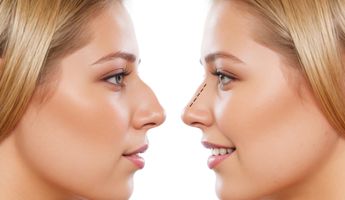
Find the best clinics for Septoplasty in New York City
No clinics available
Romania offers the best prices Worldwide
Price: $ 404

- Home
- United States
- New York City
Compare Before & After Photos of _procedure_photos.phpSeptoplasty
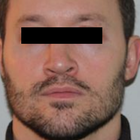
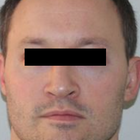
Front view
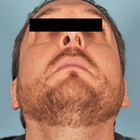
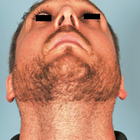
Front view
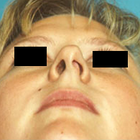
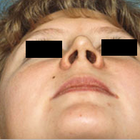
Front view
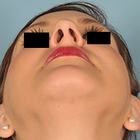
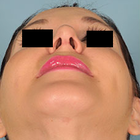
Front view
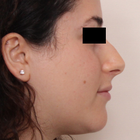
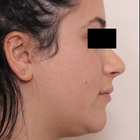
Full-side view
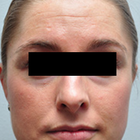
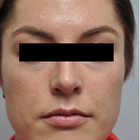
Front view
WHY US?
At Medijump, we're making medical easy. You can search, compare, discuss, and book your medical all in one place. We open the door to the best medical providers worldwide, saving you time and energy along the way, and it's all for FREE, no hidden fees, and no price markups guaranteed. So what are you waiting for?

Free

Best Price

Widest Selection

Risk-Free
What you need to know about Septoplasty in New York City
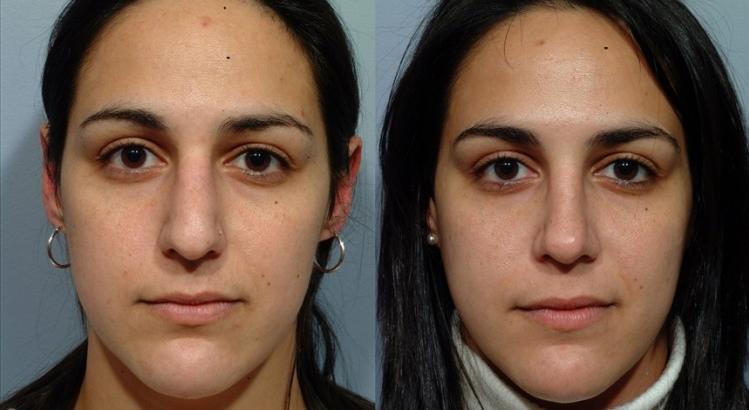
A septum is a bone and cartilage that separates the nasal cavity of the nose. When your nasal septum is off-center, crooked, or moved to one side of your nose, it is a condition known as a deviated septum and can make breathing difficult. To correct this condition, you may need to undergo Septoplasty, where your septum will be straightened to allow better airflow through your nose. This surgery is the only way to fix a deviated septum. However, septoplasty may also be performed to treat long-term sinusitis, remove nasal polyps, or treat other conditions that block the nasal airways. Sometimes, surgeons also recommend this surgery to stop recurrent nosebleeds and facial pains. For conditions other than deviated septum, surgeons often only recommend septoplasty after ruling out other treatments.
What does a Septoplasty Procedure Involve?
A deviated septum is common, but when the condition is severe, it can block one side of your nose and reduce airflow. It can also contribute to crusting or bleeding. If you experience difficulty breathing through your nose that significantly affects your life, you may want to consider septoplasty. Before the surgery, your doctor will review the details of the surgery and ask you to complete some routine tests, such as a blood test, electrical heart tracing, or X-ray. Be sure to tell your doctor if you have any possible allergies. To prepare for the procedure, you may need to stop taking certain medications at least two weeks before the surgery because they can increase your risk of excessive bleeding and the medications include aspirin, ibuprofen, and other blood-thinners.
Septoplasty can be carried out under local anesthesia or general anesthesia. If you have the surgery under local anesthesia, you should not eat or drink anything after midnight the night before the procedure. Not eating and drinking will prevent you from vomiting and choking if the anesthesia nauseates you during surgery. Your surgeon will start the surgery by making an incision on one side of your nose to access the septum. They will then lift the mucosa lining that covers the cartilage and bone. Next, they will reshape the cartilage and bone to move the deviated septum to the correct position. Extra pieces of bone or cartilage that make barriers will be removed. Then, they will reposition the mucous membrane. You may need stitches to hold the septum and membrane in place. Soft silicone splints are sometimes inserted inside the nostrils to support the septum. The whole procedure takes between 30 to 90 minutes to complete.
How Long Should I Stay in New York City for a Septoplasty Procedure?
Septoplasty is an outpatient procedure, which means you will likely go home on the same day of the surgery after the anesthesia has worn off unless major complications arise. However, you should stay in the New York City for 3-4 days for the initial recovery and follow-up checkups. If your surgeon places splints in the nose, they will be removed within seven days. You may return home when your surgeon allows you as long as there is no complication.
What's the Recovery Time for Septoplasty Procedures in New York City?
You may feel drowsy for a few hours following the surgery and you may also feel pain. However, your surgeon will prescribe medication to help with the pain. Some congestion and bleeding can occur after you are discharged from the hospital as your body recovers, but these symptoms should be gone in 2 weeks. The recovery period varies from one person to another. In general, you should be able to return to work within a few days, but you should allow at least three weeks before going back to your full normal routine. You should also limit your physical activities such as exercise for several weeks to minimize swelling and speed up healing because intense physical activities can increase your blood pressure and lead to bleeding.
What sort of Aftercare is Required for Septoplasty Procedures in New York City?
Your doctor will give you post-operative care instructions, which you will need to follow, The wound on your nose will heal fairly quickly, and your breathing will improve shortly after the procedure. For a quicker recovery, you may need to elevate your head at night to keep the swelling down, wear a button-up shirt so you do not need to pull clothing over your head, and do not blow your nose for at least two to three days after surgery. Avoid drinking alcohol, smoking tobacco, returning to work too soon, strenuous activities, and being in a crowd where people are smoking or coughing.
What's the Success Rate of Septoplasty Procedures in New York City?
The success rate for septoplasty is high, with up to 85% of people experiencing a significant improvement in their nasal blockage after surgery.
However, some people will require a second surgery if they are not satisfied with the results. Septoplasty is a very low-risk procedure, but you should be aware of the possible complications and side effects and these risks can include:
- Bleeding in small amounts is common, but in rare cases, excessive bleeding may occur.
- Infection can occur after septoplasty because the nose is not a sterile environment.
- Toxic shock syndrome is a very rare and life-threatening infection.
- Septal perforation is a small hole that can sometimes develop in the nasal septum during or after the surgery.
- Spinal fluid leak and it is extremely rare.
Other risks such as scarring, and altered nose shape, discoloration of the nose, a decreased sense of smell, tooth or nose numbness, and continuing symptoms are also possible. Other than following your surgeon’s aftercare instructions, keeping the nose clean and washing your hands often can reduce the risks.
Are there Alternatives to Septoplasty Procedures in New York City?
Although most conditions of a deviated septum can only be treated by septoplasty, there are nonsurgical treatments for other nasal blockages to help you breathe better. If your nasal blockage is caused by an allergy, you may take antihistamines from your doctor or over-the-counter. In cases of bacterial infection, your doctor can prescribe antibiotics to help clear the nasal airways.
Whilst the information presented here has been accurately sourced and verified by a medical professional for its accuracy, it is still advised to consult with your doctor before pursuing a medical treatment at one of the listed medical providers
No Time?
Tell us what you're looking for and we'll reachout to the top clinics all at once
Enquire Now

Popular Procedures in New York City
Prices Start From $1,945

Prices Start From $101

Prices Start From $192

Prices Start From $500

Recommended Medical Centers in New York City for procedures similar to Septoplasty

- Interpreter services
- Translation service
- Religious facilities
- Medical records transfer
- Medical travel insurance
- Health insurance coordination
- TV in the room
- Safe in the room
- Phone in the room
- Private rooms for patients available

- Interpreter services
- Translation service
- Religious facilities
- Medical records transfer
- Medical travel insurance
- Health insurance coordination
- TV in the room
- Safe in the room
- Phone in the room
- Private rooms for patients available

- Interpreter services
- Translation service
- Religious facilities
- Medical records transfer
- Medical travel insurance
- Health insurance coordination
- TV in the room
- Safe in the room
- Phone in the room
- Private rooms for patients available

- Interpreter services
- Translation service
- Religious facilities
- Medical records transfer
- Medical travel insurance
- Health insurance coordination
- TV in the room
- Safe in the room
- Phone in the room
- Private rooms for patients available

- Interpreter services
- Translation service
- Religious facilities
- Medical records transfer
- Medical travel insurance
- Health insurance coordination
- TV in the room
- Safe in the room
- Phone in the room
- Private rooms for patients available

- Interpreter services
- Translation service
- Religious facilities
- Medical records transfer
- Medical travel insurance
- Health insurance coordination
- TV in the room
- Safe in the room
- Phone in the room
- Private rooms for patients available

- Interpreter services
- Translation service
- Religious facilities
- Medical records transfer
- Medical travel insurance
- Health insurance coordination
- TV in the room
- Safe in the room
- Phone in the room
- Private rooms for patients available

- Interpreter services
- Translation service
- Religious facilities
- Medical records transfer
- Medical travel insurance
- Health insurance coordination
- TV in the room
- Safe in the room
- Phone in the room
- Private rooms for patients available

- Interpreter services
- Translation service
- Religious facilities
- Medical records transfer
- Medical travel insurance
- Health insurance coordination
- TV in the room
- Safe in the room
- Phone in the room
- Private rooms for patients available

- Interpreter services
- Translation service
- Religious facilities
- Medical records transfer
- Medical travel insurance
- Health insurance coordination
- TV in the room
- Safe in the room
- Phone in the room
- Private rooms for patients available
Septoplasty in and around New York City
About New York
New York City, or simply New York (NY), is the most populous city in the United States with an estimated population of over 8 million. The city is labeled as the cultural, financial, and media capital of the world. It is an important center of international diplomacy since it houses the headquarters of the United Nations. The city has been attracting tourists from all around the globe for its architectural beauty, dining spots, and arts. Fueled by its global popularity and superior healthcare, the city also welcomes patients from many other countries to undergo cosmetic surgeries and complex or rare procedures that are not available in the patient’s home country. The medical professionals are highly qualified, skilled, and experienced. The medical costs might not be the cheapest, but patients will get the best treatment in the world.
Popular Areas in New York
New York offers its visitors a myriad of attractions to see and things to do. Tourists can find world-famous sites in almost every corner. The following are the most popular places in the city.
- Statue of Liberty is a symbol of freedom and democracy. It was a gift from the French people to the people of the United States as a monument of international friendship during the American Revolution. This famous statue was designed by French sculptor Frédéric Auguste Bartholdi, and the metal framework was built by Gustave Eiffel. Tourists can access the pedestal and the crown. Although the climb to the top is strenuous, the view from Lady Liberty’s crown is breathtaking, making it one of the most rewarding experiences of your trip to NYC. To get to the statue, you need to take a ferry from Battery Park City or New Jersey. There is only one official ferry company that is allowed to take you to the islands, Statue Cruises.
- Staten Island Ferry offers a stunning landscape of New York City and the Statue of Liberty. The ferry runs frequently and is free. Tourists can enjoy the refreshing breeze while admiring Governors Island, the Brooklyn Bridge, lower Manhattan and Wall Street’s skyscrapers, Ellis Island, the Statue of Liberty, and the Verrazano-Narrows Bridge.
- Empire State Building is perhaps the most iconic symbol of New York City. This magnificent landmark should not be missed by any visitors. The building was opened during the Great Depression in 1931 and tourists can see its Art Deco style in the architecture. The view from its 86th and 102nd floors is spectacular, especially around sunset time.
- Central Park is 843 acres of open space and is a good place to escape from the concrete jungle of New York City. The park was designed by Frederick Law Olmsted and Calvert Vaux, and it was the first major landscaped public park in the United States. Tourists can wander around the park, enjoy a picnic, visit a memorial to John Lennon, or interact with animals in the Zoo.
Weather and Climate in New York
New York City has four seasons, each with its own perks, which makes the city a year-round destination.
- Spring starts in March and ends in April. The city enjoys a pleasant temperature during this season. It is one of the most beautiful times to visit since the city is filled with Cherry Blossoms and hosts a number of festivals. However, expect to experience seasonal storms.
- Summer is from June to August. The temperatures are mostly warm, with an average between 25 °C to 30 °C. The city is usually crowded and busy during this season, but tourists can enjoy several free summer concerts.
- Autumn is a great time to visit New York City, which lasts from September to November. The summer heat will be replaced with a cooler temperature, and the city is overflowing with red and orange leaves.
- Winter in the city can be freezing and sometimes snowy. The season starts in December and ends in February. The temperatures can drop as low as -25 °C. If you plan to visit during winter, make sure to dress properly.
Getting Around in New York
The primary international airport in New York City is the John F. Kennedy International Airport. More than ninety airlines operate from this airport, including several budget airlines such as JetBlue. Getting around the city is fairly easy and inexpensive, especially by public transportation. The city has 27 subway lines stopping at 472 stations and more than 5,000 buses. To ride the subway, you will need to purchase a MetroCard that cost $1. The fares are $2.75 per trip and you can buy a one week unlimited MetroCard for $33 or an unlimited monthly MetroCard for $127.
The bus will take you to many places including the east or west portions of Manhattan. The bus fares are $2.75 per trip and the buses only accept MetroCard or exact fare in coins. If you do not want the hassle to figure out the public transportation system, the iconic yellow taxis are widely available. You can flag them down directly from the streets. The taxis are green in Brooklyn and Uber and Lyft are also available.
Tourists Visas in New York
Citizens of Canada, Marshall Islands, Micronesia, Palau, and Bermuda are given visa exemption access. Holders of passports issued by 38 countries including Australia, Singapore, and the United Kingdom are selected for the Visa Waiver Program. Nationals from countries that are not listed in the visa exemption and visa waiver program need to apply for a visa. All visitors may stay for a maximum of 90 days. It is advisable to learn more about the visa policy at your nearest United States Embassy.
Additional Information
- Local Currency: US dollar ($) is the official currency. Please check XE.com for the current exchange rate to your local currency.
- Money & Payments: ATMs can be found everywhere, and credit cards are accepted at most hotels, restaurants, and shops. Tipping is not optional. For restaurant servers and bartenders, 15% - 20% of the bill is acceptable.
- Local Language: The main language in New York City is English. However, there are over 800 languages spoken in the city, such as Spanish and Chinese.
- Local Culture and Religion: Christianity is the major religion in New York City, followed by Judaism, Islam, Buddha, and Hindu.
- Public Holidays: New York City celebrates various holidays, including New Year, Martin Luther King Jr Day, Independence Day, Thanksgiving Day, and Christmas Day.
Popular Searches
- Plastic Surgery in Thailand
- Dental Implants in Thailand
- Hair Transplant in Thailand
- Breast Augmentation Thailand
- Gastric Sleeve in Thailand
- Gender Reassignment Surgery in Thailand
- Laser Hair Removal in Bangkok
- Botox in Bangkok
- Dermatology in Bangkok
- Breast Augmentation in Bangkok
- Coolsculpting in Bangkok
- Veneers in Turkey
- Hair Transplant in Turkey
- Rhinoplasty in Turkey
- Stem Cell Therapy in Mexico
- Rhinoplasty in Mexico
- Liposuction in Mexico
- Coolsculpting in Tijuana
- Rhinoplasty in Korea
- Scar Removal in Korea
- Gastric Sleeve in Turkey
- Bone Marrow Transplant in India
- Invisalign in Malaysia
- Plastic Surgery in the Dominican Republic
- Tummy Tuck in the Dominican Republic
- Plastic and Cosmetic Surgery in Poland
- Rhinoplasty in Poland
- Hair Implant in Poland
- Dental Implants in Poland
- IVF in Turkey